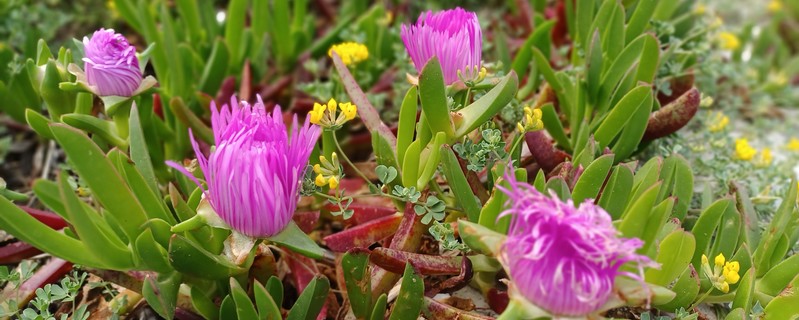Drought tolerant planting
I have seen quite a few articles in the last few months promoting the idea of UK gardeners changing their borders to include more “drought tolerant plants”. Although it may seem intuitively as if ‘drought’ goes with ‘global warming’, the reality is not that simple especially in gardening terms. Whilst the UK may see higher temperatures in summer, the prediction and emerging evidence, is that we will also see wetter winters  and more storms in both seasons. The problem with this is that drought tolerant plants are adapted to living in climates with little water all year round, not just in summer and as a consequence need very free drainage. The last thing they can cope with is waterlogged roots through the winter. And, because most have evolved in much warmer climates than ours, even a mild UK winter with just a few frosty nights or a couple of days of snow will see many drought tolerant plants perish, especially succulents.
and more storms in both seasons. The problem with this is that drought tolerant plants are adapted to living in climates with little water all year round, not just in summer and as a consequence need very free drainage. The last thing they can cope with is waterlogged roots through the winter. And, because most have evolved in much warmer climates than ours, even a mild UK winter with just a few frosty nights or a couple of days of snow will see many drought tolerant plants perish, especially succulents.
In areas of Kent and Sussex that are on chalk or sand, successful gardens already include plants that do not need supplementary water in summer because the soil is so free draining that the roots are likely to be dry even in a ‘normal’ UK summer. They survive a UK wet winter because the rain drains away quickly avoiding waterlogging. In areas on clay the ground will continue to be waterlogged in winter despite climate change – risking drought tolerant plants rotting off – and it already sets like concrete in summer. The only difference of summer rain arriving in storms instead of drizzle is that the water will simply run off the solid ground.
Mediterranean and grey leaved plants like Lavender, Rosemary and Cistus do indeed make a great addition to our gardens, not because of climate change but because they bring shape, colour, texture and fragrance all year round. They are superb plants for pots, raised beds or in gravel beds, all of which supply the sharp drainage they love.
For me the long term answer is much simpler: to make the soil more resilient and continue to plant what suits the underlying conditions, making gradual changes as the situation evolves and appropriate to your specific garden. And this simply means more of the same soil management advice that has been applicable for centuries. Add well-rotted organic matter to the soil, to improve the water holding capacity of sand and chalk and increase the drainage capability of clay.
Happy Gardening from Alison
If you enjoyed reading this blog why not receive my monthly newsletter direct to your email inbox with blogs, video tips and seasonal articles to inspire and inform. Sign up HERE.

